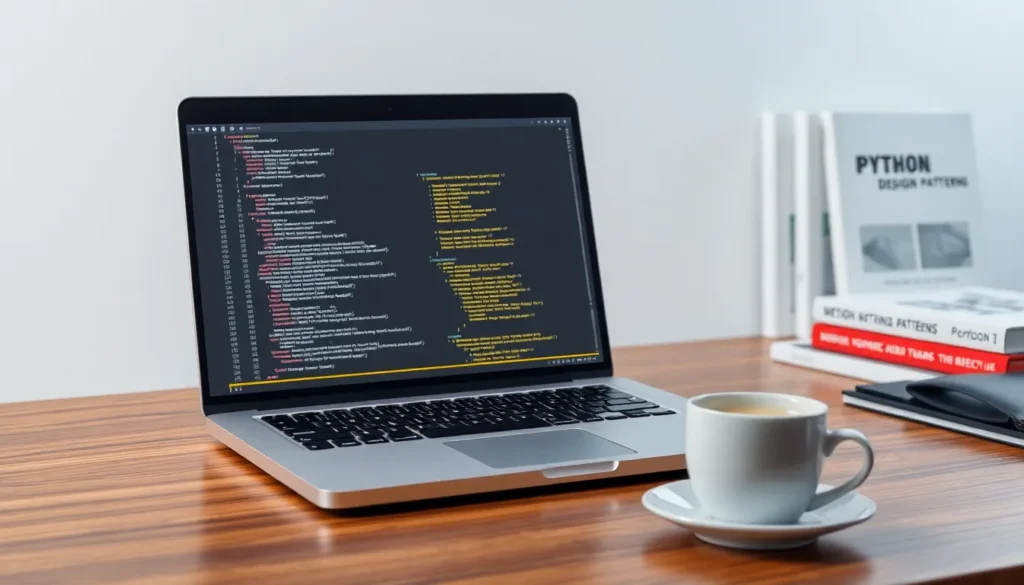In the world of data analysis, Python is the cool kid on the block, effortlessly juggling numbers while sporting a pair of stylish sunglasses. With its user-friendly syntax and powerful libraries, it’s no wonder data analysts are flocking to this programming language like moths to a flame. Whether it’s crunching numbers or visualizing data, Python makes it feel like a walk in the park—if that park had a few datasets scattered around.
Table of Contents
ToggleOverview of Python for Data Analysis
Python remains a leading choice for data analysis due to its versatility and accessibility. This programming language streamlines data handling, visualization, and manipulation, appealing to both beginners and seasoned analysts.
Importance of Data Analysis
Data analysis plays a critical role in decision-making processes across various industries. It unveils insights that inform strategies and optimize operations. Analysts utilize data to identify patterns, trends, and anomalies, which enhance understanding and drive innovation. Moreover, effective analysis leads to better forecasting and resource allocation, directly impacting profitability and growth.
Why Choose Python?
Choosing Python offers several advantages for data analysis. First, its extensive libraries, such as Pandas and NumPy, facilitate efficient data manipulation and analysis. Each library provides specific functions tailored for diverse tasks, allowing analysts to tackle complex datasets with ease. Second, Python’s readability improves code comprehension, promoting collaboration and reducing errors. Finally, strong community support ensures users have access to a wealth of resources and tutorials, boosting learning and troubleshooting capabilities.
Key Features of Python for Data Analysis

Python’s robust features make it an ideal choice for data analysis, focusing on efficiency and effectiveness while handling complex data tasks. Analysts benefit from its extensive libraries and community-driven resources that enhance the data analysis process.
Libraries and Frameworks
Python’s rich ecosystem includes libraries like Pandas, NumPy, and SciPy, each designed for specific data tasks. Pandas offers powerful data structures and tools for data manipulation. NumPy specializes in numerical operations, supporting array-based computations. SciPy builds on NumPy, providing advanced mathematical functions and statistical tools. Other frameworks, such as Matplotlib and Seaborn, help visualize data effortlessly. These libraries streamline workflows, empowering analysts to conduct in-depth analyses efficiently.
Data Handling and Manipulation
Data handling capabilities in Python stand out due to its ability to clean, transform, and analyze large datasets. Operations like merging and reshaping data are intuitive with Pandas, allowing quick adjustments and analysis. Analysts can easily handle missing values and outliers, enhancing data quality. Additionally, Python supports integration with SQL databases and CSV files, facilitating seamless data import and export. Users achieve significant time savings through these powerful data manipulation techniques, ultimately leading to more accurate insights.
Getting Started with Python for Data Analysis
Engaging with Python for data analysis begins with creating an environment suited for development. Many users choose Anaconda as it simplifies package management and deployment.
Installation and Setup
Installing Python can be accomplished via Anaconda, downloadable from the official website. After installation, users access several pre-installed libraries essential for data analysis. Alternatively, one can install Python and needed libraries through pip, a package manager. Starting with a Python IDE like Jupyter Notebook or PyCharm enhances the coding experience, providing essential tools for writing and testing code. Users find Jupyter Notebook particularly advantageous for writing code in cells, facilitating document sharing with visualization outputs.
Basic Syntax and Concepts
Understanding basic syntax lays a foundation for further exploration. Python uses indentation to define code blocks, making it distinct from many other programming languages. Data types in Python include integers, floats, strings, and lists, allowing versatile data representation. Users often employ variables to store information and methods to perform operations on that data. Familiarity with control structures such as loops and conditionals enhances the ability to manipulate datasets effectively. Functions in Python encapsulate code for reusability, fostering cleaner and more organized programming practices.
Advanced Techniques in Python for Data Analysis
Advanced techniques enhance Python’s capabilities in data analysis, leading to deeper insights and improved results.
Data Visualization Skills
Data visualization skills play a crucial role in data analysis. Analysts use libraries like Matplotlib and Seaborn to create informative and aesthetically pleasing charts. Python’s flexibility in visual representation enables users to customize visuals, making it easier to communicate findings. Understanding various chart types helps analysts choose the best way to present their data. For example, scatter plots reveal correlations between variables, while heatmaps can illustrate data density. Mastering these visualization tools allows analysts to understand data trends and support decision-making processes.
Machine Learning Integration
Machine learning integration significantly expands Python’s data analysis capabilities. Analysts can utilize libraries such as Scikit-learn and TensorFlow to build predictive models. These tools simplify complex processes, allowing for straightforward implementation of algorithms. With machine learning, analysts identify patterns and forecast outcomes more accurately. Techniques ranging from regression to clustering enhance analysis by adding predictive insights. By combining traditional data analysis methods with machine learning, analysts achieve a more comprehensive understanding of their data and improve their strategic recommendations.
Best Practices and Tips
Implementing best practices in Python data analysis not only improves efficiency but also enhances collaboration and code maintainability.
Writing Clean Code
Writing clean code remains essential for any data analyst. Clarity in naming variables and functions increases readability. Consistent formatting, like proper indentation, helps others understand the thought process behind the code. Comments can provide context for complex logic, aiding future modifications. Analysts often adopt PEP 8 style guidelines for Python, promoting standardization across projects. Modular functions limit redundancy, making code easier to debug. Reviewing code with peers encourages knowledge sharing and uncovers potential issues early on. Using version control systems like Git ensures project history is preserved, allowing easy rollback if needed.
Efficient Data Manipulation Techniques
Efficient data manipulation techniques streamline the analysis process. Utilizing Pandas for data handling simplifies operations on large datasets. Analysts should employ vectorization, which allows for faster computations by processing entire arrays rather than individual elements. Grouping data with Pandas’ groupby function facilitates easy aggregations and summaries. Dataframes enable intuitive operations, such as filtering and merging datasets to derive new insights. Proper use of indexing speeds up data access, reducing computation time. Leveraging built-in functions like apply and map enhances performance for element-wise operations. Understanding these techniques fosters a smoother workflow and accelerates project completion.
Python stands out as a powerful tool for data analysis due to its simplicity and extensive library support. Analysts can easily manipulate data and create compelling visualizations that lead to informed decision-making. The combination of user-friendly syntax and robust community resources makes it accessible for anyone looking to dive into data analysis.
Leveraging Python’s capabilities allows professionals to uncover valuable insights that drive innovation across industries. By adopting best practices and utilizing advanced techniques, analysts can enhance their workflows and deliver impactful results. Embracing Python not only streamlines the data analysis process but also empowers analysts to explore new dimensions of their data.










